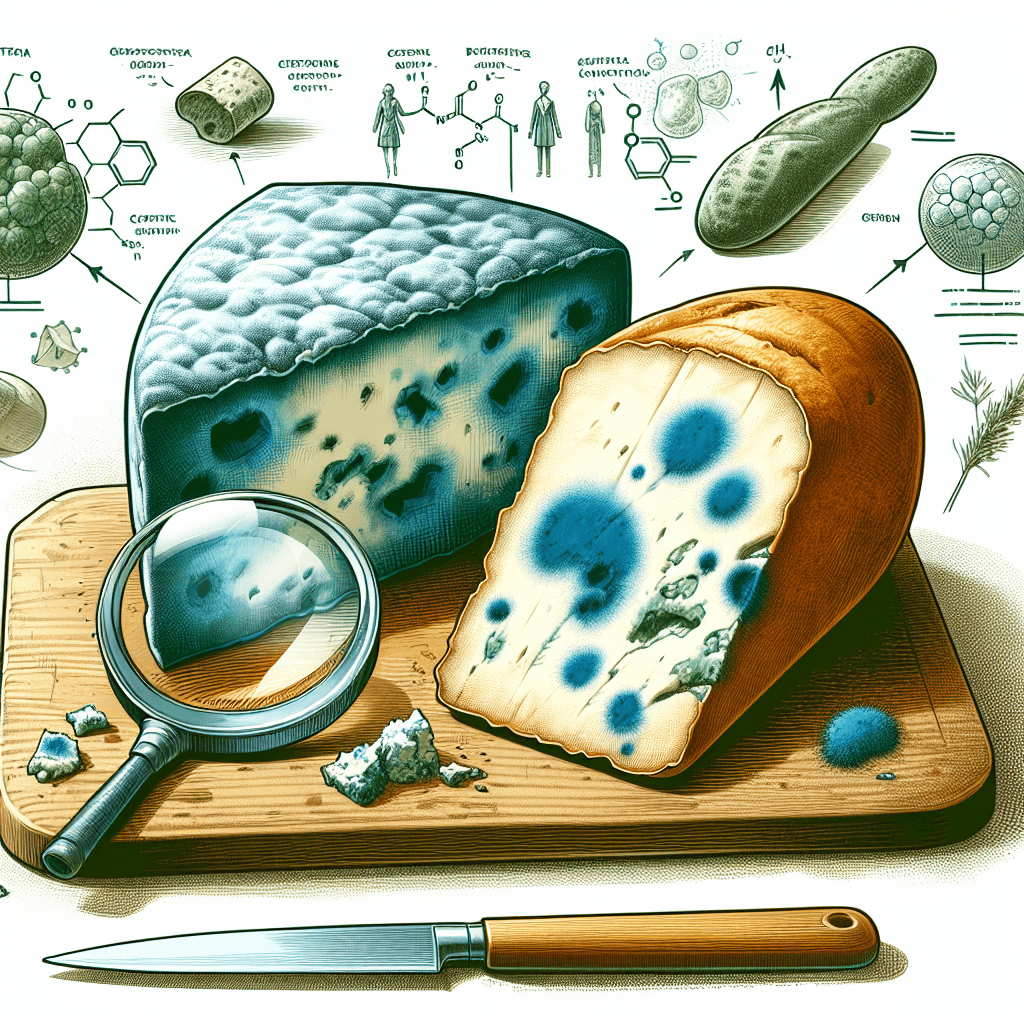What creates the crunchy little crystals found inside some aged cheeses
Ever felt that satisfying crunch in a piece of aged cheese? Far from being a flaw, those tiny "flavor crystals" are the delicious hallmark of a perfectly matured masterpiece.


Too Long; Didn't Read
TLDR: The crunchy crystals in aged cheese are a good thing. They are either tyrosine amino acid crystals formed as proteins break down over time, or calcium lactate crystals which form on the surface. Both are signs of a well-aged, flavorful cheese.
Cheese Diamonds: What Creates the Crunchy Little Crystals Found Inside Some Aged Cheeses?
Have you ever been savoring a slice of aged Parmigiano-Reggiano or a mature Gouda and encountered a delightful, crunchy little speckle? For a moment, you might wonder if it's a grain of salt or something that shouldn't be there. But then you notice it adds a pleasing textural pop and seems integral to the cheese's character. These tiny, crystalline formations are not a flaw; in fact, they are a celebrated hallmark of a well-aged, high-quality cheese. Often called "flavor crystals" or "cheese diamonds," their presence is a tell-tale sign of maturity and complex flavor development. This post will delve into the fascinating science behind these crunchy little crystals, exploring what they are and the intricate processes that create them.
A Tale of Two Crystals
That delightful crunch isn't caused by just one type of crystal. The cheese world is home to two distinct varieties, each formed through a different process during the magical journey of aging. Cheesemakers and connoisseurs can often tell them apart by where they appear and how they feel. Understanding both is key to appreciating the complexity of your favorite aged cheeses.
Tyrosine: The Protein Crystal
The most famous cheese crystals are formed from an amino acid called tyrosine. Amino acids are the fundamental building blocks of proteins. Here’s how they come to be:
- The Process: During aging, a process called proteolysis occurs. Natural enzymes in the cheese work to break down the long, complex protein chains (specifically, casein) found in milk.
- The Result: As these protein chains are dismantled, individual amino acids are released. Tyrosine is one of these, and it is not very water-soluble. As the cheese continues to age and lose moisture, the concentration of free tyrosine increases until it can no longer stay dissolved in the cheese's paste. It crystallizes, forming hard, bright white specks.
You will typically find tyrosine crystals embedded within the body of the cheese. They provide a distinct, slightly granular and firm crunch. Cheeses famous for their tyrosine crystals include aged Gruyère, Parmigiano-Reggiano, and some long-aged Cheddars.
Calcium Lactate: The Surface Crystal
The other common type of crystal is calcium lactate. While it also contributes a pleasant texture, its origin story is different.
- The Process: To make cheese, starter cultures (good bacteria) are added to milk to convert lactose (milk sugar) into lactic acid. This acid then combines with the calcium naturally present in the milk, forming calcium lactate.
- The Result: In a young cheese, calcium lactate is dissolved. However, as the cheese ages and loses water, the calcium lactate becomes more concentrated. Eventually, it precipitates out of solution and forms visible crystals.
Unlike tyrosine, calcium lactate crystals often form on the surface of the cheese and can even be found in the small cracks and crevices. They tend to be softer, more delicate, and can sometimes appear as a fine, white, crystalline film across the cheese. Aged Goudas are famous for their abundance of these crystals, as are many aged Cheddars.
A Sign of Quality and Flavor
The presence of these crystals is more than just a textural bonus; it’s a direct indicator of a cheese's journey. The very same biochemical reactions that create these crystals are responsible for developing the deep, complex flavors we seek in aged cheese. The breakdown of proteins and fats creates the nutty, savory, and brothy notes that define a mature Parmesan or the butterscotch-like sweetness of an old Gouda.
So, the next time you bite into a piece of aged cheese and discover that satisfying crunch, don't be alarmed. Celebrate it! You've found a cheese diamond, a delicious confirmation that the cheesemaker's patience and craft have resulted in a truly mature and flavorful product. It's a sign that the cheese is at its peak, ready to be enjoyed in all its complex, crunchy glory.
More Articles

Why is it safe to eat the mold in blue cheese but not on bread?
One mold is a carefully cultivated delicacy, while its cousin on your bread is growing dangerous, invisible toxins—we'll break down the crucial difference.

Why does fresh pineapple prevent gelatin desserts from becoming solid?
It's not a kitchen mistake; it's a case of culinary sabotage at the molecular level. Discover the powerful, protein-devouring enzyme in fresh pineapple that's actively digesting your dessert before it can even set.

Why are some ships deliberately fitted with metal blocks that are designed to be destroyed?
It sounds like madness, but these humble metal blocks are designed with a single, vital mission: to sacrifice themselves to the sea, preventing the ship's massive hull from being eaten alive.